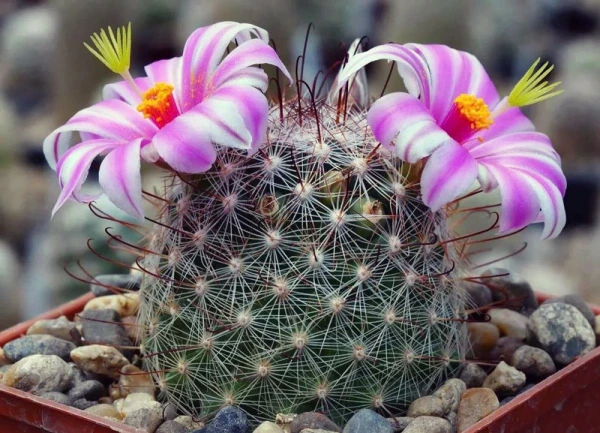
In stores, cacti are often decorated with dried flowers for attractiveness. However, even in home conditions, one can wait for the miracle of natural blooming for years: the cactus grows and seems to feel quite well, but there are still no flowers. There are not so many reasons for such behavior, and even a novice cactus grower can fix them.
Choose the Right Cactus
In theory, most house cacti should bloom, but in practice, some of them require challenging conditions to do so. For example, Cleistocactus will only please its owners after reaching a height of 30–40 centimeters, Echinocactus and some Cereus species will do so only after reaching an age of 30–40 years. And the popular Opuntia, resembling a pancake with ears, often lacks sunlight in temperate latitudes.
On the other hand, Echinopsis, Rebutia, Mammillaria, Gymnocalycium, and Astrophytum are relatively undemanding. With proper care, they bloom willingly and beautifully starting from about the third year of their life.
Send the Cactus into Winter Dormancy
The main rule for cactus growers is that spiny ones need to be kept in strict conditions. Pampered by warmth, frequent watering with regular feeding, and spacious pots, they lose interest in blooming.
Most cacti form buds in early spring, so they need to be switched to an energy-saving mode for the winter. This primarily concerns temperature: optimal conditions are considered to be 8–15 degrees. From December to early March, watering, feeding, repotting, and even moving the pot from place to place should be stopped.
An excellent option is to "forget" the cactus on a glazed, well-lit, cool, and ventilated balcony. If there is no balcony, place the pots as close to the glass as possible, but try to isolate them from heating devices. An even safer choice is to opt for cacti that are tolerant of warm winters, such as Echinopsis and Gymnocalycium.
Provide Light, but Protect from Burns
Cacti love light and feel great on windowsills. However, the light should be diffused, not scorching: sunny summers often threaten the plants with burns. Therefore, if your windows face south, it is better to move the cacti to a high stool or table.
In winter, some species, such as Mammillaria, may require additional lighting. If the cactus starts to shrivel and lose its shape, place it under a grow light.
Don’t Overdo Watering
Less water is better than too much. In spring and summer, it is enough to water the cactus once a week when the soil is completely dry. In autumn, the number of waterings is reduced to prepare the plant for dormancy. In winter, a dormant cactus does not need to be watered. Begin waking it up in March with light misting of the soil, gradually transitioning to the usual watering regime.
If the spiny one has remained to winter in an apartment without a drop in temperature, it still needs to be watered, but no more than once or one and a half times a month.
Do not mist the cactus itself. This can lead to mold and rot of the plant.
Postpone Moves and Repotting Until Spring
Cacti are conservative and do not like to be moved, even to turn the pot. During the winter dormancy, it is undesirable to shift it even by a centimeter. It is best to repot cacti in spring, right after dormancy and before the blooming period. For spiny ones in the active growth phase, the optimal interval is once a year, for more mature ones — no more than once every three years. The pot should be snug so that the cactus does not relax.
Soil and fertilizers should be chosen with the label "for cacti and succulents." Young plants will be fine with one or two spring feedings during the growth period. Some cactus growers are even convinced that fertilizers only harm their beloved plants.













